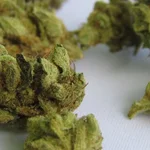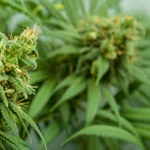Understanding the Differences
When it comes to marijuana, there are two primary categories to consider: medical and recreational. While both types of marijuana come from the same plant, there are significant differences between the two. Medical marijuana has been legalized in many states in the US and is used to treat various medical conditions, while recreational marijuana is used for its psychoactive effects.
Medical Marijuana
Medical marijuana is used to treat various medical conditions, including chronic pain, nausea, seizures, and muscle spasms. It is made up of the same compounds as recreational marijuana, including THC and CBD, but the primary difference is in how it is used. Medical marijuana is prescribed by a doctor and is taken in specific doses, often in the form of pills, oils, or tinctures.
One of the benefits of medical marijuana is that it can relieve symptoms of certain medical conditions without the side effects of traditional medications. For instance, opioids are commonly prescribed to treat chronic pain, but they can be highly addictive and can lead to overdose. Medical marijuana, on the other hand, can be an effective pain reliever without the risk of addiction.
Recreational Marijuana
Recreational marijuana is used for its psychoactive effects. It is often smoked or consumed in edibles, and it is used to produce a high or a sense of relaxation. While it is often used for recreational purposes, it can also have some medical benefits, such as reducing anxiety or helping with insomnia.
Unlike medical marijuana, recreational marijuana is not prescribed by a doctor and does not have specific dosage guidelines. This means that individuals who use recreational marijuana may be unsure of how much to take or how it will affect them.
Legalization
In recent years, there has been a trend towards the legalization of marijuana in the US. As of 2021, 36 states have legalized medical marijuana, while 15 states and the District of Columbia have legalized recreational marijuana. However, the laws regarding the use of marijuana vary widely from state to state, and there are still many restrictions and regulations in place.
In states where marijuana is legal, individuals can purchase it from licensed dispensaries. However, there are often restrictions on how much can be purchased at one time, and it is illegal to transport marijuana across state lines.
Conclusion
While medical and recreational marijuana come from the same plant, there are significant differences between the two. Medical marijuana is used to treat various medical conditions and is prescribed by a doctor, while recreational marijuana is used for its psychoactive effects and is not prescribed by a doctor. Both types of marijuana have benefits, but it is important to understand the differences between them and to use them safely and responsibly.
Myths and Misconceptions
As with any topic, there are many myths and misconceptions surrounding marijuana. In this section, we will debunk some of the most common ones.
Myth: Medical Marijuana is a Gateway Drug
One of the most common myths about medical marijuana is that it is a gateway drug that leads to the use of more dangerous drugs. This myth is not supported by scientific evidence. In fact, studies have shown that states with medical marijuana laws have lower rates of opioid addiction and overdose.
Myth: Marijuana is Not Addictive
Another common myth is that marijuana is not addictive. While it is true that not everyone who uses marijuana will become addicted, it is still possible to develop a dependence on it. In fact, according to the National Institute on Drug Abuse, around 9% of people who use marijuana will become addicted.
Myth: Marijuana Has No Medical Benefits
While recreational marijuana is used for its psychoactive effects, medical marijuana has been shown to have several medical benefits. For instance, it can be an effective pain reliever for those with chronic pain, and it can help reduce seizures in those with epilepsy.
Myth: Marijuana is Legal Everywhere
While there has been a trend towards the legalization of marijuana in the US, it is still not legal everywhere. In fact, marijuana is still illegal under federal law, and there are still many states where it is not legal for either medical or recreational use.
Conclusion
There are many myths and misconceptions surrounding marijuana, but it is important to separate fact from fiction. Medical marijuana has been shown to have several medical benefits, and while it is possible to become addicted to marijuana, not everyone who uses it will. Additionally, while some states have legalized marijuana, it is still not legal everywhere.
The Benefits of Medical Marijuana
Medical marijuana has been legalized in many states in the US, and for good reason. There are several benefits to using medical marijuana to treat various medical conditions.
Pain Relief
One of the most common uses for medical marijuana is to relieve pain. Chronic pain can be difficult to manage, and traditional pain medications such as opioids can be highly addictive and can lead to overdose. Medical marijuana, on the other hand, can be an effective pain reliever without the risk of addiction.
Reduce Nausea
Another benefit of medical marijuana is that it can reduce nausea. This is particularly useful for those undergoing chemotherapy or radiation treatment, as these treatments can often cause severe nausea and vomiting.
Reduce Muscle Spasms
Medical marijuana has also been shown to be effective in reducing muscle spasms, particularly in those with multiple sclerosis. Muscle spasms can be extremely painful and can impact a person’s ability to perform daily tasks. Medical marijuana can help reduce the severity and frequency of these spasms, making it easier for individuals to go about their daily lives.
Reduce Seizures
Medical marijuana has also been shown to be effective in reducing seizures, particularly in those with epilepsy. While more research is needed in this area, early studies have shown promising results.
Conclusion
Medical marijuana has several benefits, including pain relief, reducing nausea, reducing muscle spasms, and reducing seizures. While more research is needed to fully understand the benefits of medical marijuana, it is clear that it can be an effective treatment for various medical conditions.
Side Effects of Medical Marijuana
While medical marijuana has several benefits, it is important to understand the potential side effects as well. Like any medication, medical marijuana can have side effects, and it is important to weigh the benefits against the potential risks.
Dry Mouth
One of the most common side effects of medical marijuana is dry mouth. This is because medical marijuana can reduce the production of saliva, which can leave the mouth feeling dry and uncomfortable.
Dizziness
Another potential side effect of medical marijuana is dizziness. This is particularly common among those who are new to using medical marijuana or those who take higher doses than recommended. Dizziness can also be a symptom of dehydration, so it is important to stay hydrated while using medical marijuana.
Impaired Memory and Concentration
Medical marijuana can also impair memory and concentration, particularly in high doses. This can make it difficult to perform daily tasks, and it can also impact performance at work or school.
Conclusion
While medical marijuana has several benefits, it is important to understand the potential side effects as well. Common side effects include dry mouth, dizziness, and impaired memory and concentration. It is important to weigh the benefits against the potential risks and to use medical marijuana safely and responsibly.












